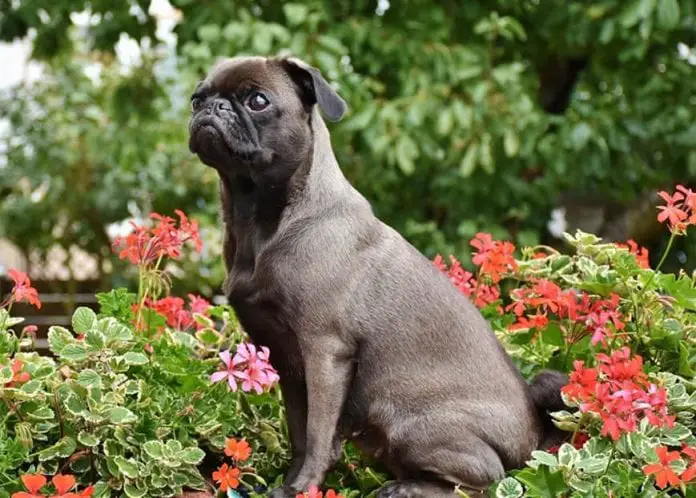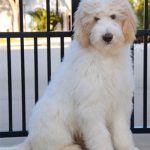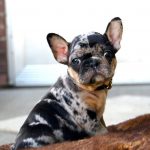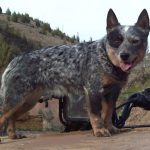The most common pug colors are black and fawn, however, apricot and silver pugs are also common. Although these are not standard AKC colors, apricot and silver pugs are recognized by other kennel clubs such as the FCI.
A silver pug doesn’t have black hair on its body. Dishonest breeders may try to show off pugs with strange colors, claiming that they’re silvers.
A silver pug should not be confused with a silver-fawn pug. The latter is a type of fawn, extremely light and accepted by the CKC. The AKC doesn’t recognize this color, but may accept a request for silver-fawn pugs to be listed as such through an alternate color. The KC and FCI recognize silver pugs.
Silver and silver-fawn pugs have black masks and black ears. They may have a thumbprint and a trace, markings that are preferred in the show ring by major kennel clubs.
Silver Pug Obedience and House Training
Just like other color variations of the breed, silver pugs have a big persona. These friendly dogs have a clownish personality. They prefer to stay inside the house where they can sleep next to their humans. Silver pugs can learn various basic obedience commands and respond to positive training methods.
Since this breed is easily distracted, you can use rewards to improve their focus. Touch their nose with your index finger and say “focus.” Bring your index finger up to your nose. Praise him and give him a treat when he looks up. Repeat this several times a day.
Your goal is to lengthen the time your pooch stays focused. Eventually, he should focus only on you when you say the word “focus.” Don’t give your pet treats without getting an action from him first.
Basic obedience helps prevent behavioral issues. Say the word “sit” and hold a treat above his nose. The treat should be out of his reach. Continue holding the treat until he sits. Reward him with praise and treats when successfully completes your command.
You can use this command when you have to clean his wrinkles. The same principle can be used when teaching the “stand-stay” and “down-stay” commands. You can also expose your silver pug to litter box training and use disposable puppy pads during housebreaking.
Bring your pug to the box when you see signs that your pooch needs to do his business or every 1 to 2 hours. Keep him there until he completes his task. Reward him with praise and treats. You can put your silver pug in a crate when you can’t supervise his activities around your house.
Since silver pugs love human company, they may suffer from separation anxiety if left alone for a long period of time. They may show destructive behavior such as chewing on your belongings and barking. Train your pooch to stay in a comfy spot when you are not at home.
The spot should have his potty place, water and safe play objects. Secure the area with a door or pet gate. Reward him in the designated spot so that he will feel comfortable to be there. Stay away from him for a few minutes and slowly lengthen this period of time to get your pug used to the separation. You can give him a treat-filled puzzle toy to keep him occupied when you are not at home.
Older dogs are harder to train than younger dogs, so it’s best to start teaching your silver pug from a young age.
How to Care for a Silver Pug
Silver pugs are low-maintenance dogs, so they are ideal for busy adults and older people. They are quiet, small and relatively inactive when inside the house. These traits make them a good option for those who live in apartments.
However, this breed is sensitive to humidity and heat. If you live in a humid or hot environment, don’t take your pooch outside. Keep him hydrated, especially during summer. If you are a light sleeper, investing in a pair of high quality ear plugs is a good idea. This is because pugs tend to snore.
Other Popular Pug Colors
1. Fawn Pugs
Fawn pugs have a trace, a line of back-tipped hairs that run down their spine. It’s common for 2 fawn shades to be seen in the same coat. A pug’s wrinkles can also affect its color because a thumbprint may exist in their coat. A thumbprint is the black fur in the folds and creases on the forehead of a pug.
2. Black Pugs
Black pugs are dark black in color. Normally, they are completely black, but it’s also possible for them to have a small white mark which usually appears on their chest. Gray hairs may begin to appear on their face or other parts of their body as they grow older.
3.Apricot and Apricot Fawn Pugs
Apricot pugs have a glossy orange coat. It’s common for pugs of this color to not be completely apricot. There may be patches of almost white color or some fawn in their coat, usually on their chest. Apricot pugs may be registered as apricot or fawn if you ask for an alternative color to appear on the documents. The KC and FCI both recognize this color. Apricot pugs also have black ears and black masks.
4. Brindle Pugs
Brindle pugs have interlocking dark and light colors that produce a striping effect. The color is usually black or grey. Brindle is not recognized by major kennel clubs and this color is disqualified in shows by the FCI, AKC, KC and CKC.
Brindle comes in various shades. There are apricot brindle and silver brindle pugs. You can also find reverse brindle pugs that have a darker color and should have black masks.
5. White Pugs
White pugs are not albino and they are very rare. They have a trace down their back and pigment in their mask. A lot of white pugs have tear staining issues, but this problem can be treated easily.
Does the Color of a Pug’s Coat Change?
The color of their coat can change as they grow older. For instance, the coat of fawn pugs may darken or lighten during their first year of life. Smuttiness or the black hairs interlocking with a light color in their coat may fade, darken or lighten in some parts except for the trace. Their mask and ears may also darken in color as they age.
The hairs around their face and muzzle may gray as they grow older. This change may occur when they turn 8 years old and it progresses along with their age.























